Search
Williams Hot Tip New Code
A from-scratch rewrite of the code for Hot Tip, using my custom OS
Rules:- Spinner is lit when four or more drop targets are down, so it'll unlight once they reset
- Completing drops lights bonus collect at the captive ball
- Lit captive ball triggers off the rollover switch instead of the target, making it easier to hit
- Captive ball lights outlane ball save
- Double bonus and captive ball turn off if collected again
Posted Friday, September 24, 2021
at 06:14 PM
Tags: Blog Post, Custom ROM, Hot Tip, Pinball, Project, System 3-6 OS, ,
Stern Cheetah Tournament Rom V1
Tournament rom mods for Stern's Cheetah
Changes:
- Bonus Collect must be relit via completing #1-5 drops in order
- Cleaned up some logic bugs with flashing arrows on the #1-5 bank
Posted Friday, September 24, 2021
at 06:06 PM
Tags: Blog Post, Custom ROM, Cheetah, Pinball, Project, ,
Stern Dracula Tournament Rom V4
I've been working on a custom ROM for Stern's Dracula for a bit now. This was originally prompted by wanting to remove its 5x bonus rule. In the original ROM, there was no way to earn 5x. You could earn 2x bonus, but 5x could only be gained by random luck on the last ball, when it would alternate between 2x and 5x (once 2x was earned) when the slingshots were hit. This made it very bad for competition play, as a 5x bonus collect could often eclipse whole game scores.
After removing that rule, I decided to make the 5x earnable by the player, and then made some other tweaks to try to rebalance the game now that 5x was in play:
- 5x alternation removed
- 5x achieved by earning 2x bonus again after 2x bonus is already lit (eg, by completing the left 3-bank of drops twice and shooting the loop three times)
- to make this a bit harder (since getting 5x should be harder than getting 2x twice), once you earn 2x bonus via either method, the other method resets (loop resets to first star, or 'light double bonus' light at left 3-bank turns off if it's on)
- made the extra ball worth 25k points, and made it collectable multiple times per ball
- lowered the special score from 100k to 70k (still playing around with this value to try to keep it balanced with the 5x bonus)
- X-Y-Z target progress carry over from ball to ball (per player). Once special is lit, on the next ball you need to hit the Y target again to relight it.
- free play
- sped up 5x bonus collect
If anyone would like to test this or has any further suggestions, send me an email
Custom OS for Williams System 3-6 Pinball Machines
Many older games from the dawn of computer based ('solid state') pinball have some pretty basic rules, and I've often pondered hacking the roms to improve them, but reverse engineering assembly from scratch isn't really my idea of fun so I never really got into it. Driving home one night though, I got to thinking: the hardware for these machines is pretty simple, the schematics are available (and even have memory addresses!), would it really be that hard to just write a brand new rom from scratch? Sure, I didn't know assembly or anything, but it couldn't be that hard!
So I sat down with a copy of the Motorola 6800 reference manual, some data sheets, the schematics, and a copy of PinMAME to debug my code in, found where the entry point/address was, and started coding.
Long story short, it actually was pretty easy! The williams hardware was designed for simplicity from a programming standpoint (though that ended up making the boards overly complicated and unreliable), all the I/O was easy to work with and within a few days I had simple drivers written for all the different peripherals and a basic 'OS' for a game that could control lights, display scores, and jump into a callback table when a switch was hit by the ball.
Programming a game itself using this would prove a bit more complicated of course, due mostly to timing/threading issues (of course, I just had to write a custom threading system for this 1MHz processor), but nothing extreme. A few months later, and I had a brand new rom for my Hot Tip, with many fancy new features which I showed off in a video here
I didn't document the whole process very much, but if you'd like to know more, or would like to try to write your own new game rom using this as a basis, drop me a line!
The full source code and roms are available at http://github.com/zacaj/williams-sys-3-6
Pinball, pt 2: Cabinet, Playfield Experiments
Some ugly Spring Break artwork wouldn't do, so I spray-painted the cabinet black:
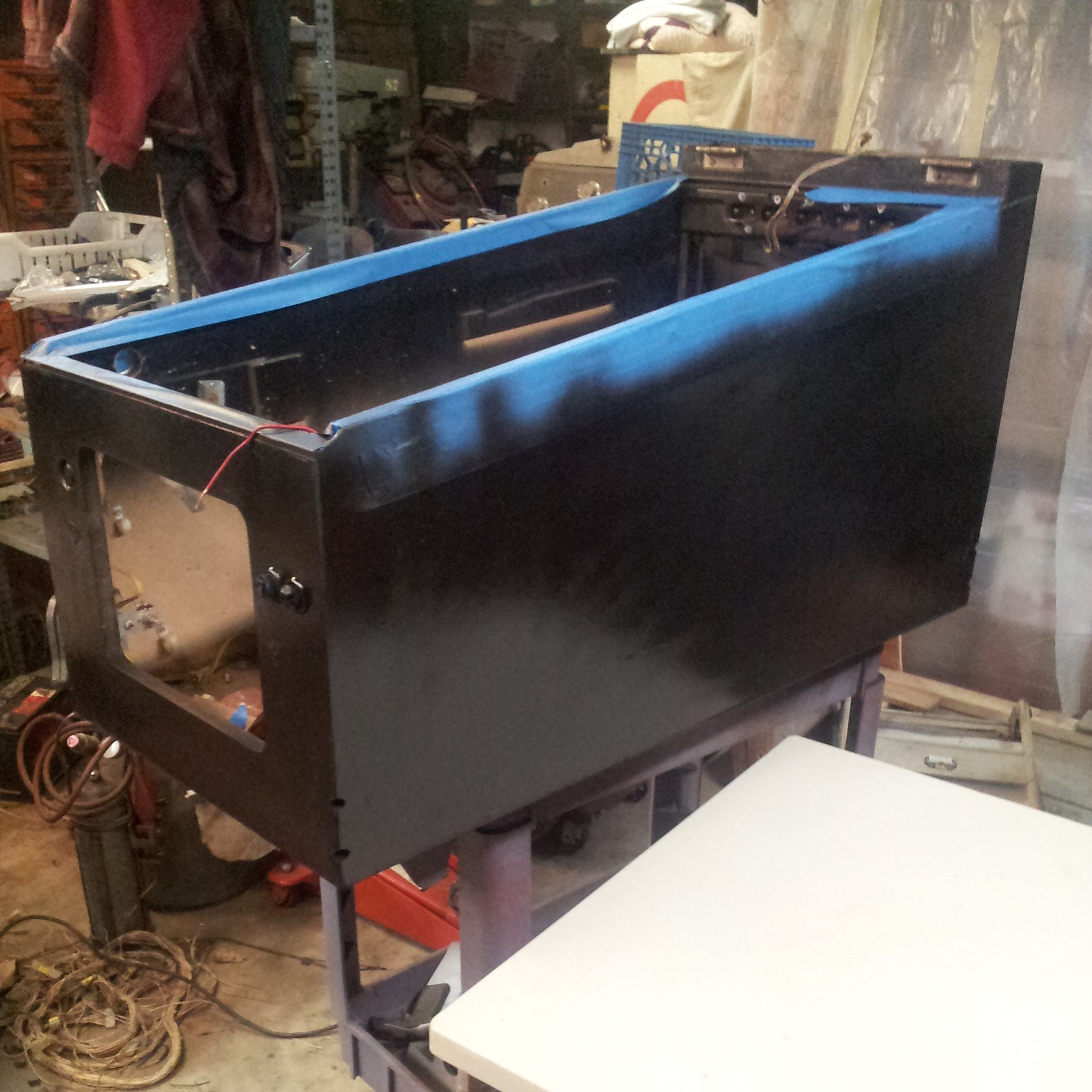
The same went for the head:
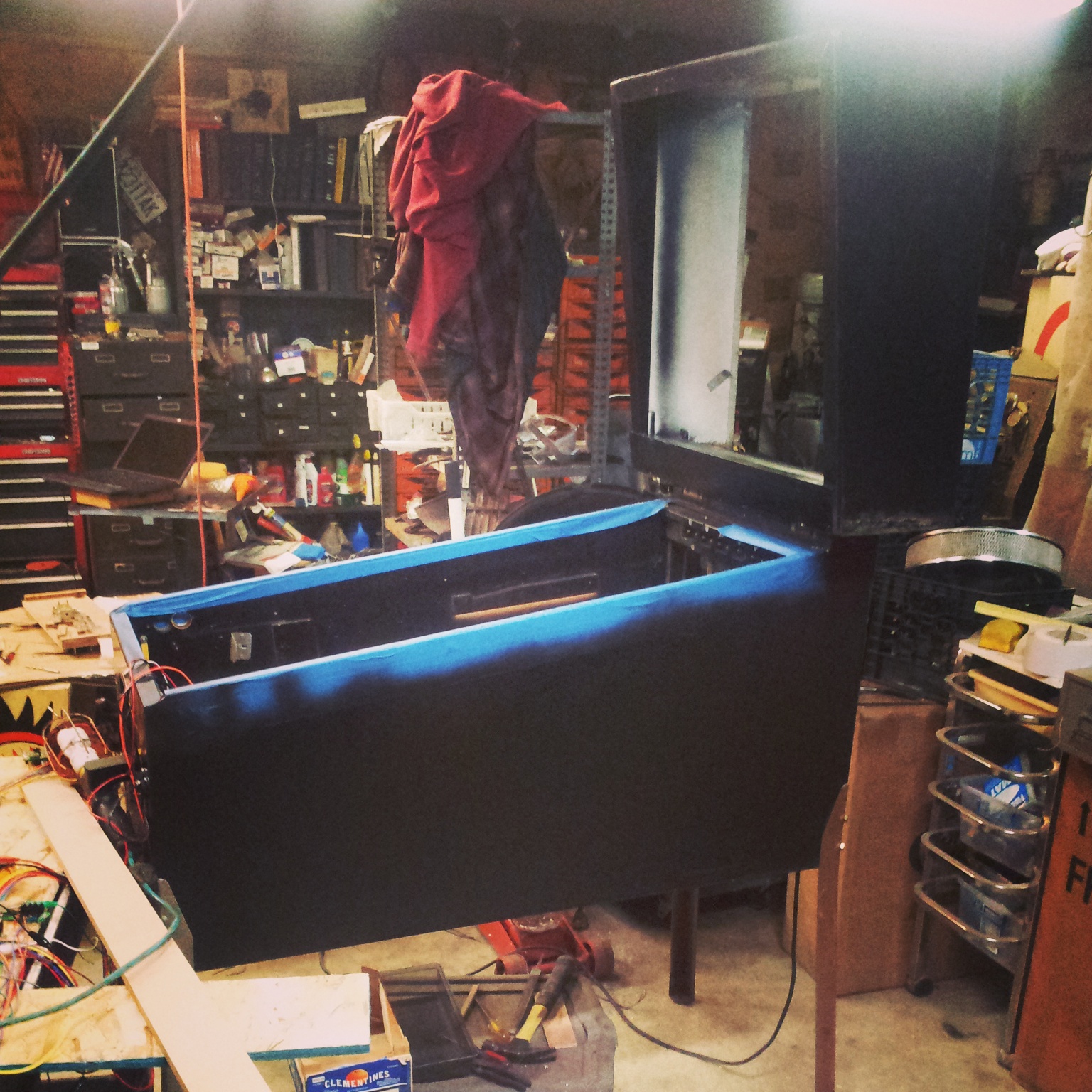
I've never understood pinball machines that couldn't think of a use for more buttons, so I put a second set in:
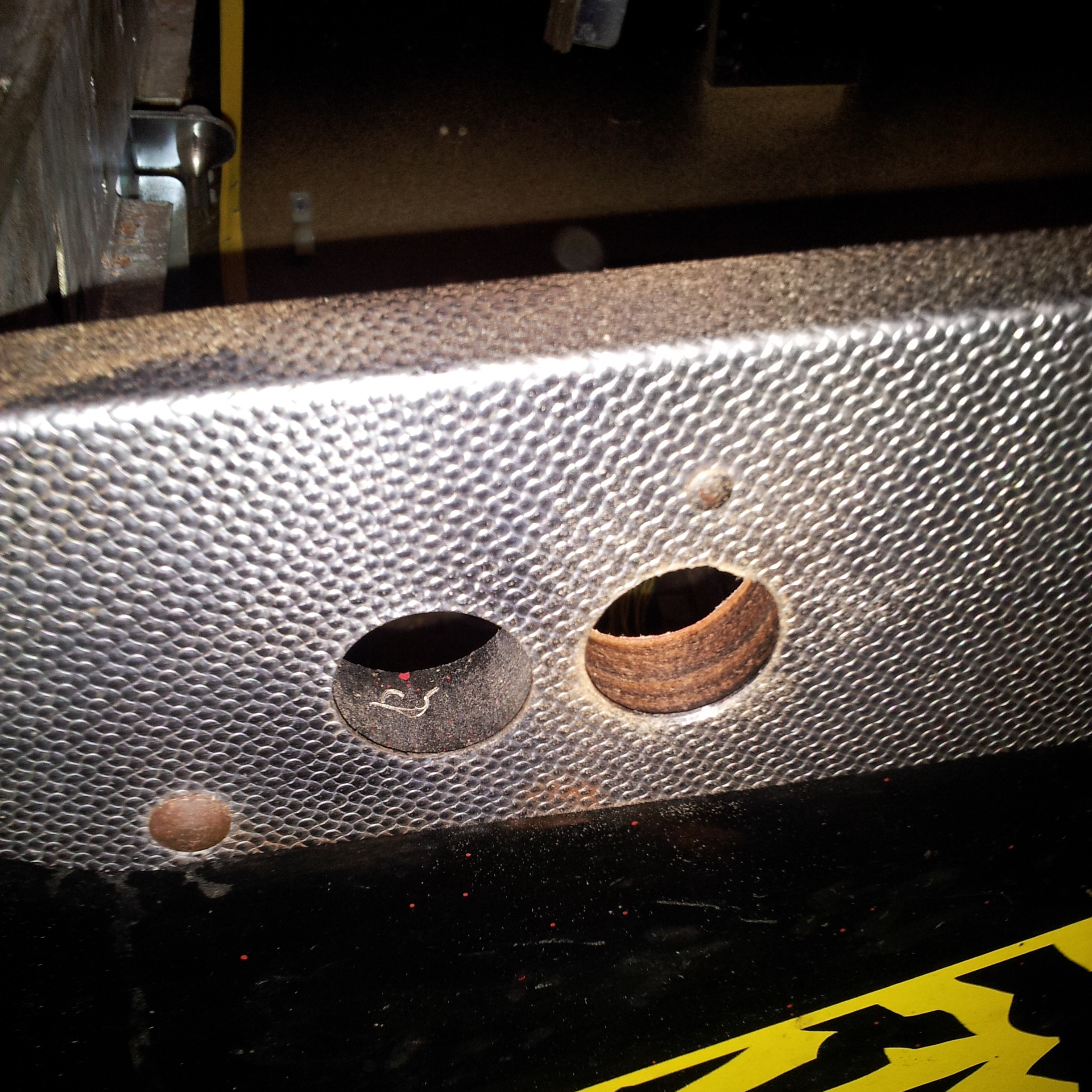
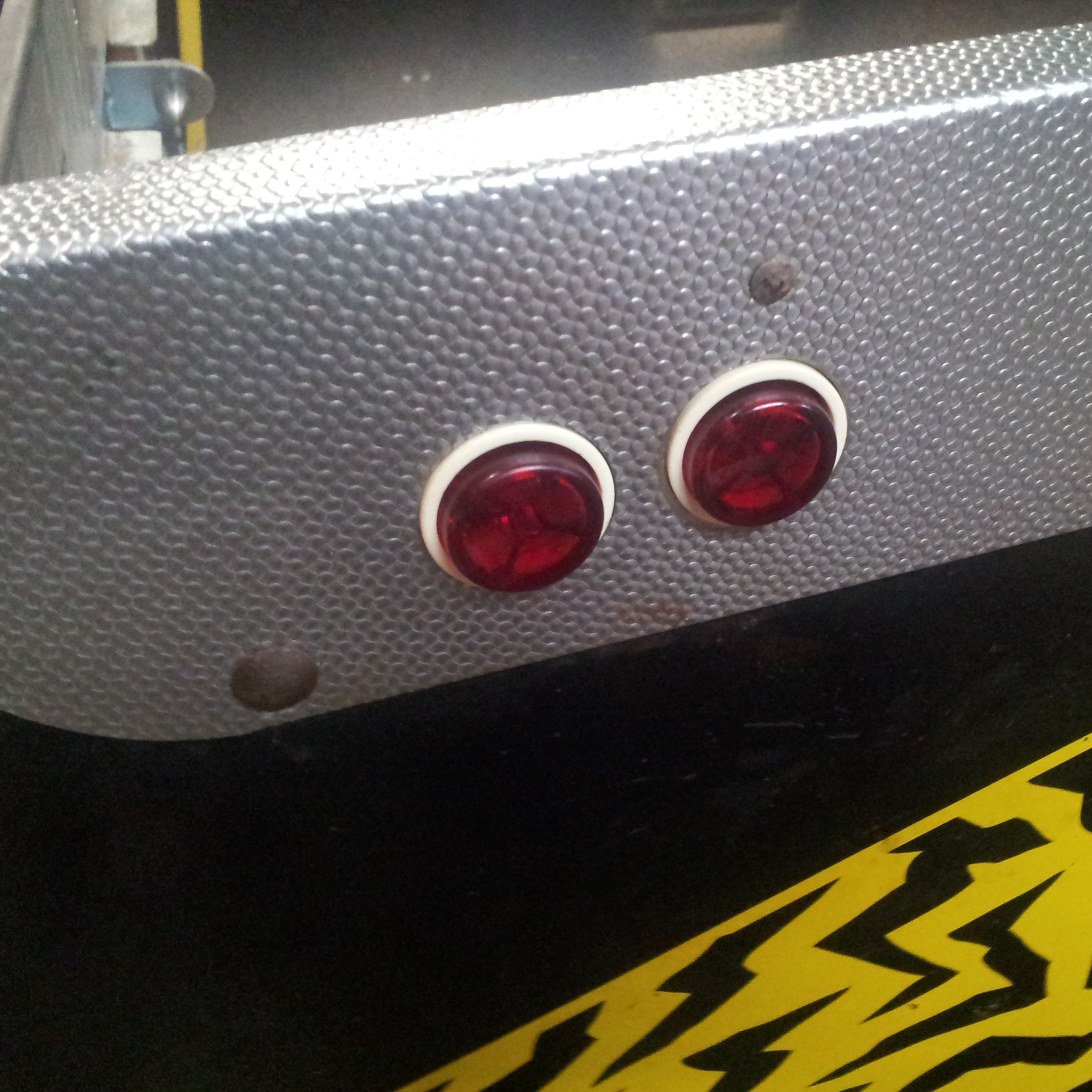
I picked up a sheet of 0.5" MDF at Home Depot, and lightly drew out my layout
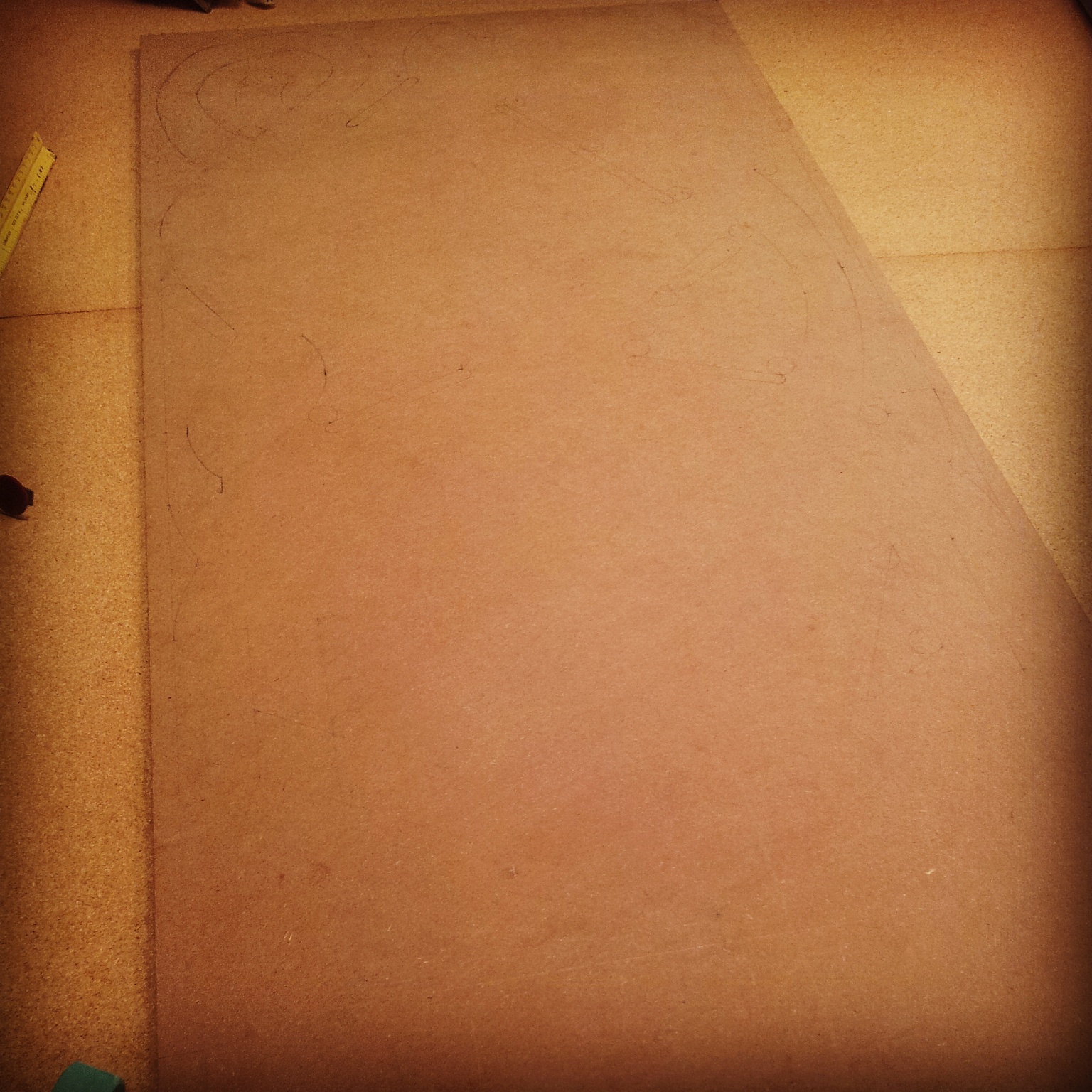
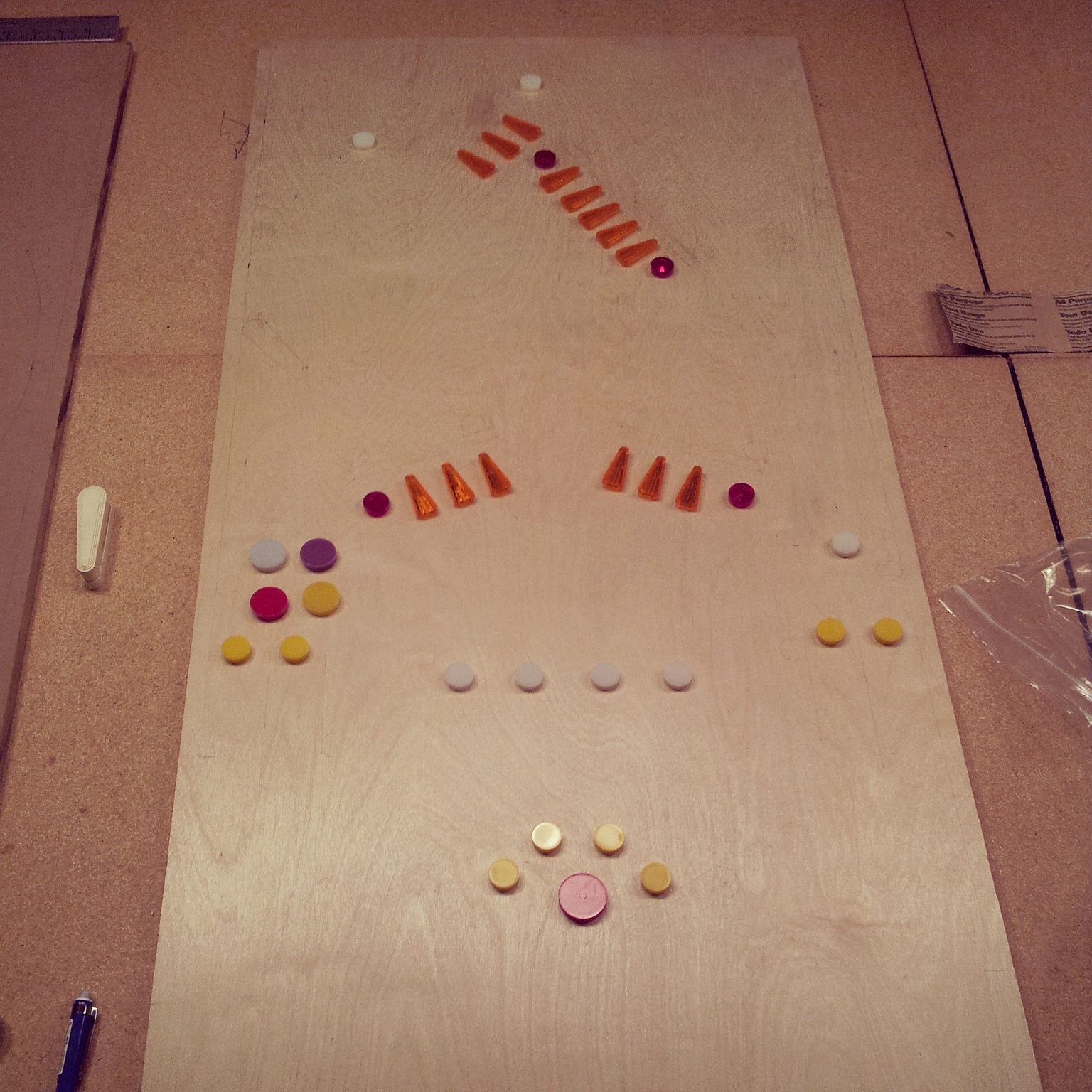
I also used leftover scraps from cutting it to the right size to experiment with mounting components
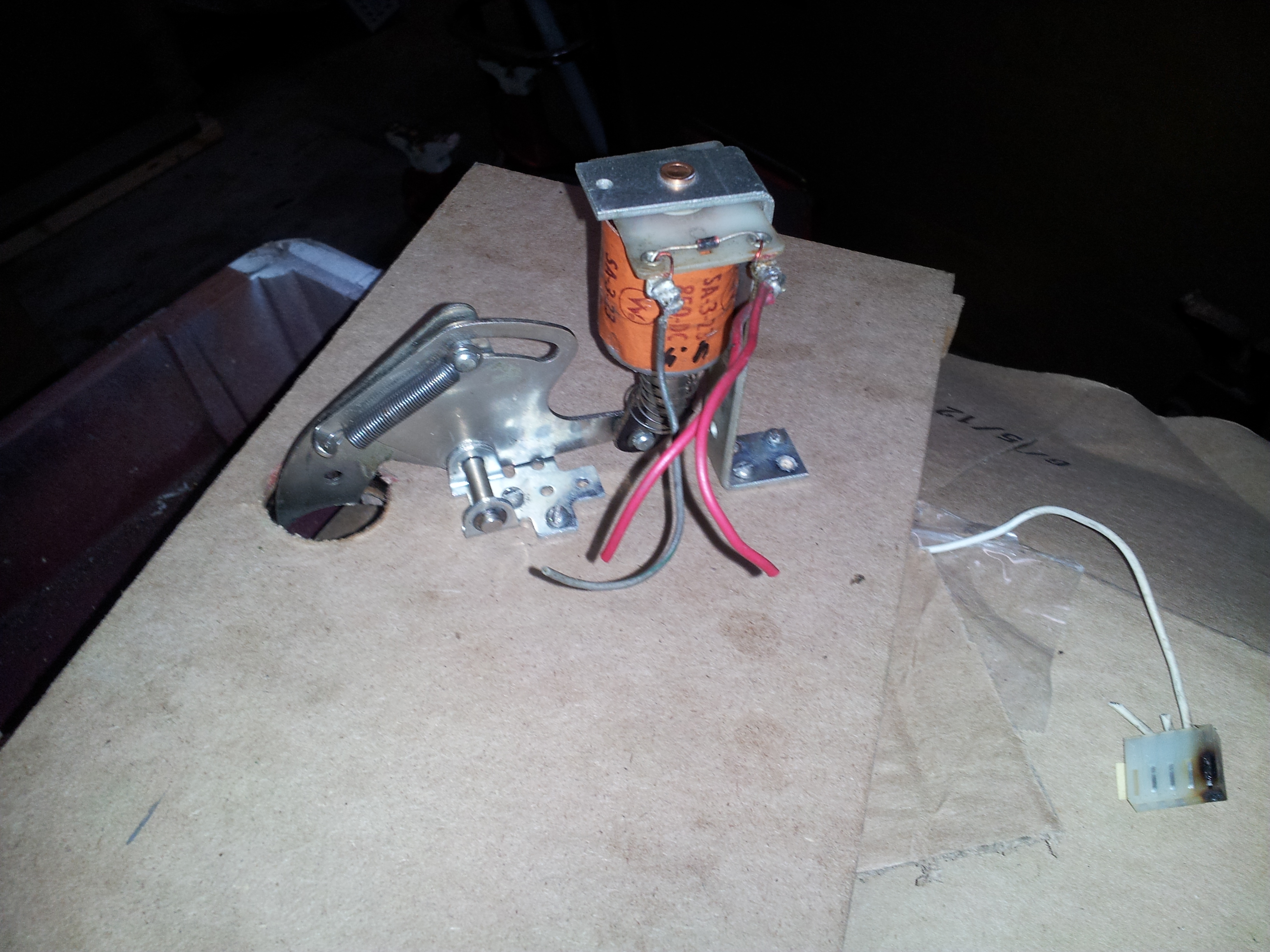
Using a small router and an 1/8" bit, I found that, as long as you go slowly, it can produce workable light insert holes
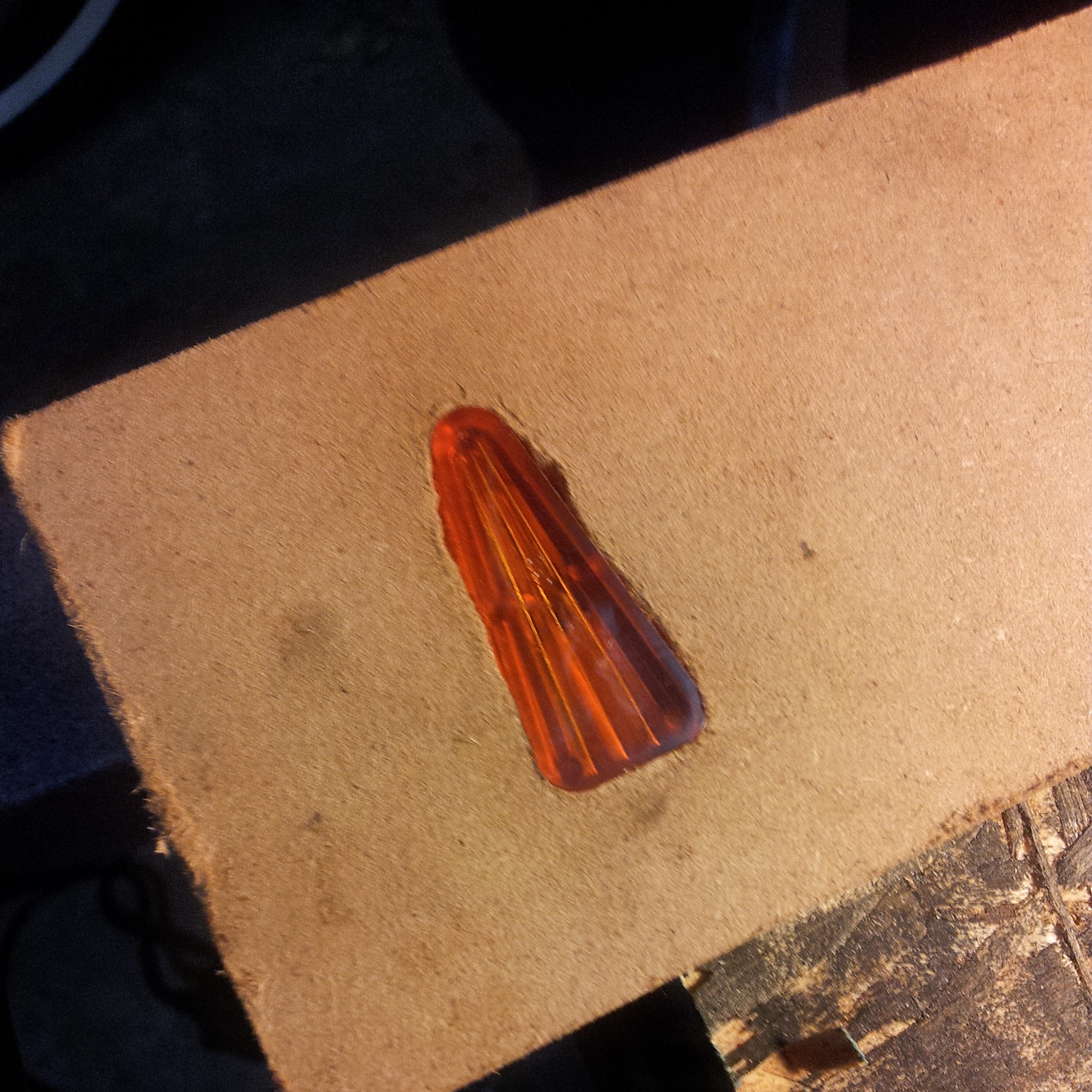
Since I couldn't find any launchers, I made one myself by welding a scoop to a piece of 0.5" iron stock and attaching some plastic to the front to guide it
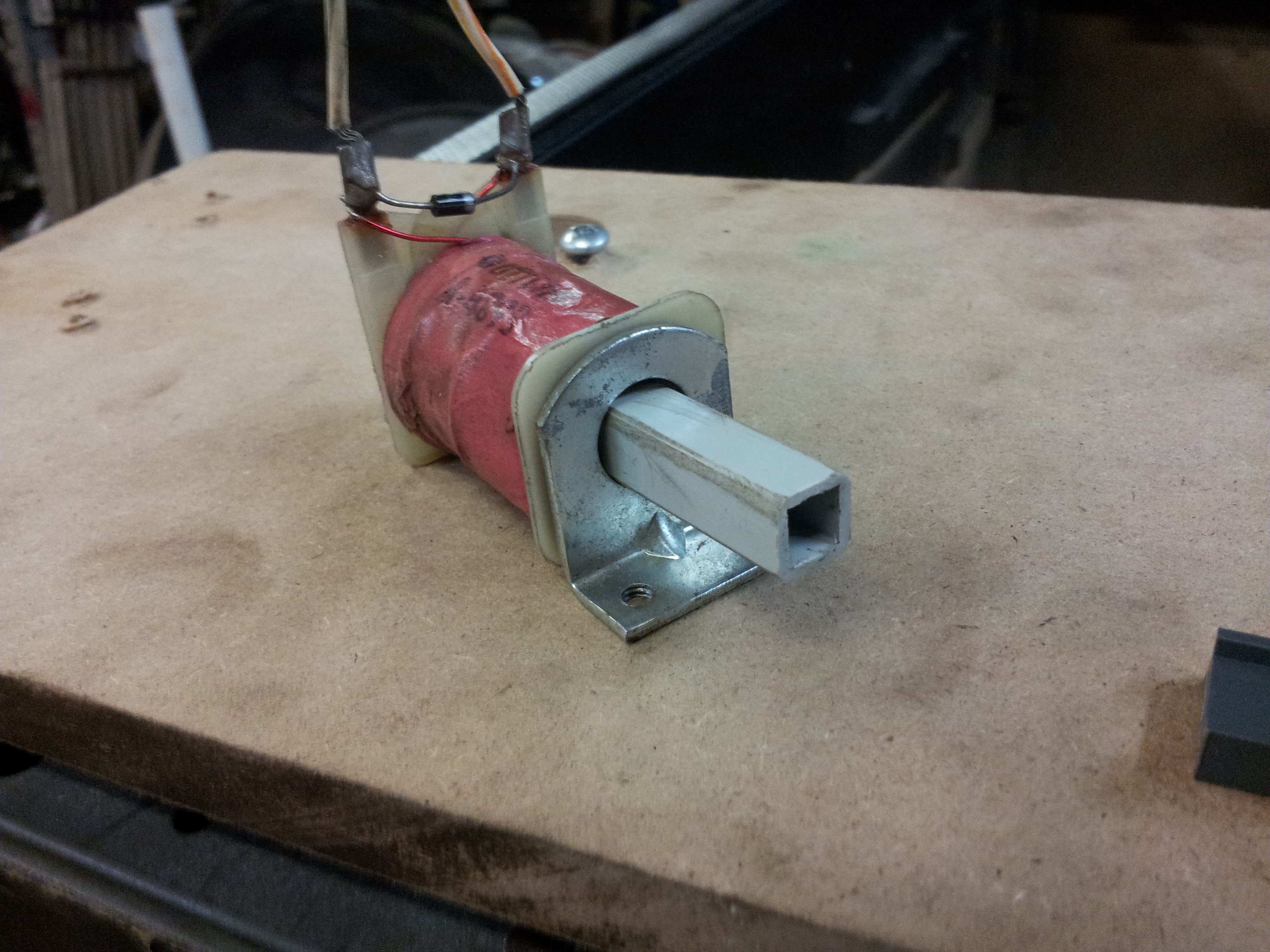
When you power the coil, it pulls the iron stock in, and the plastic guides it through
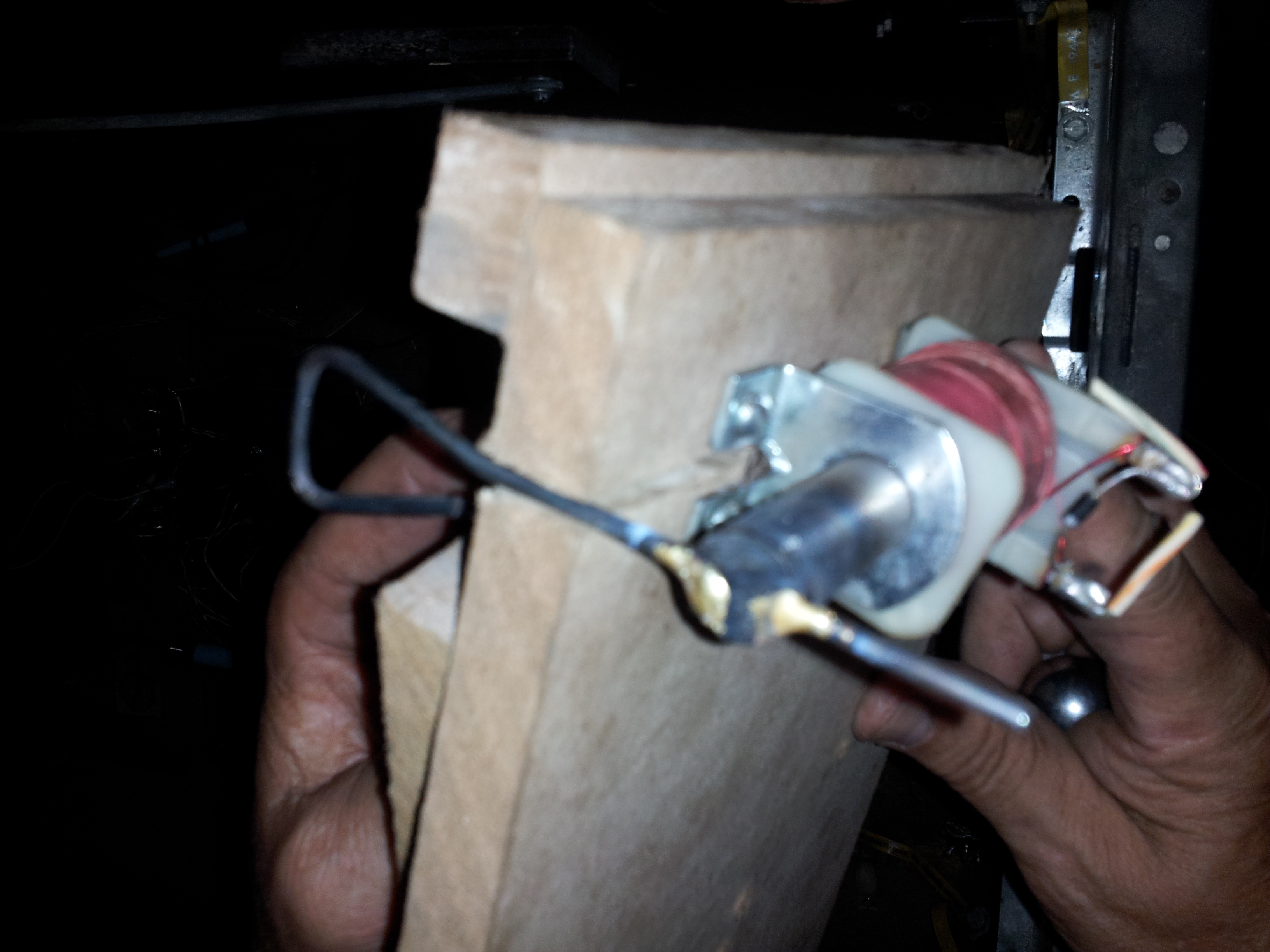
Pinball, pt 1: Parts
After two trips to the Allentown PinFest, I've managed to get together pretty much all the components I'll need for the build.
I got two boxes of assorted used parts for $20, and a ruined, half populated Spiderman playfield for $30, yielding an assortment of playfield parts:
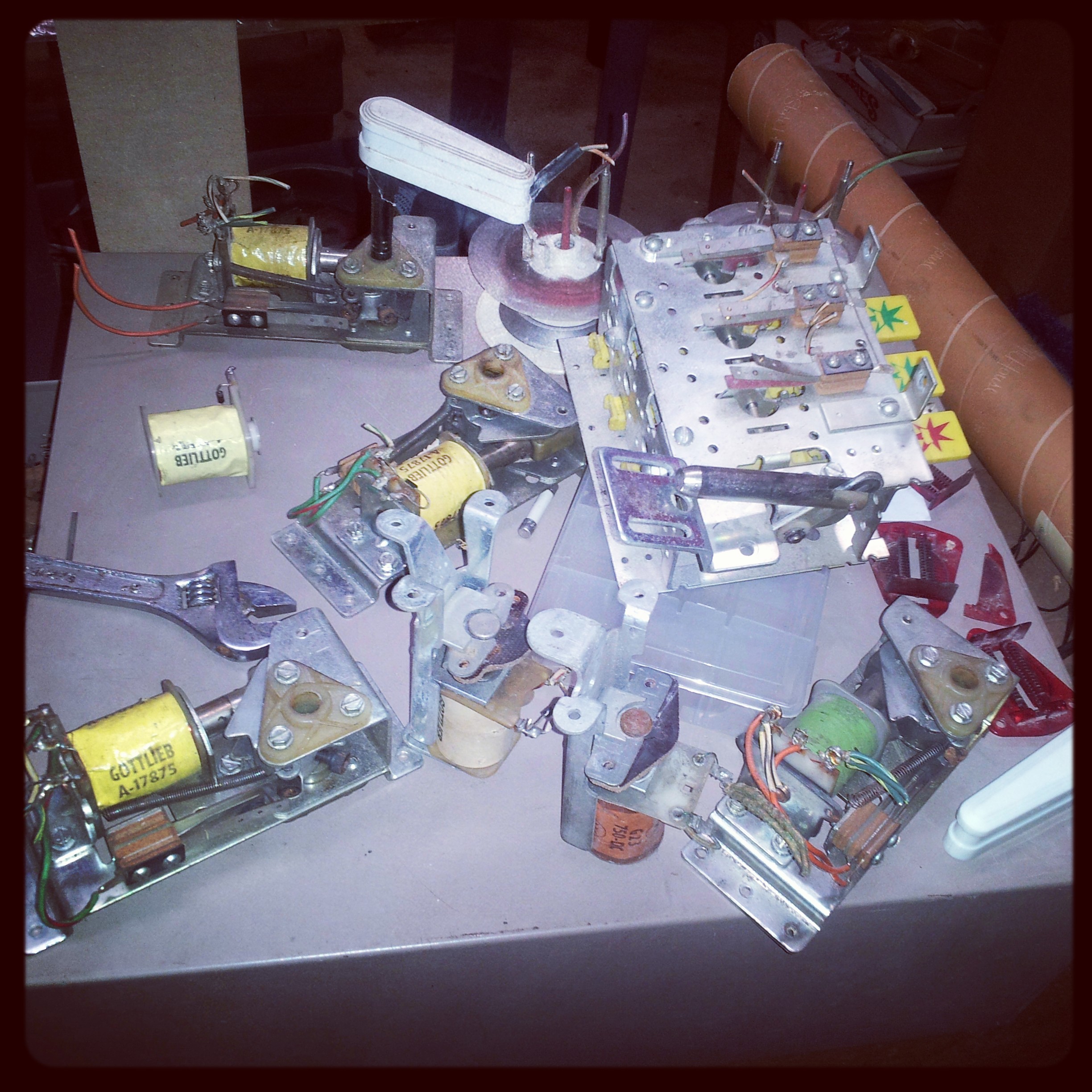
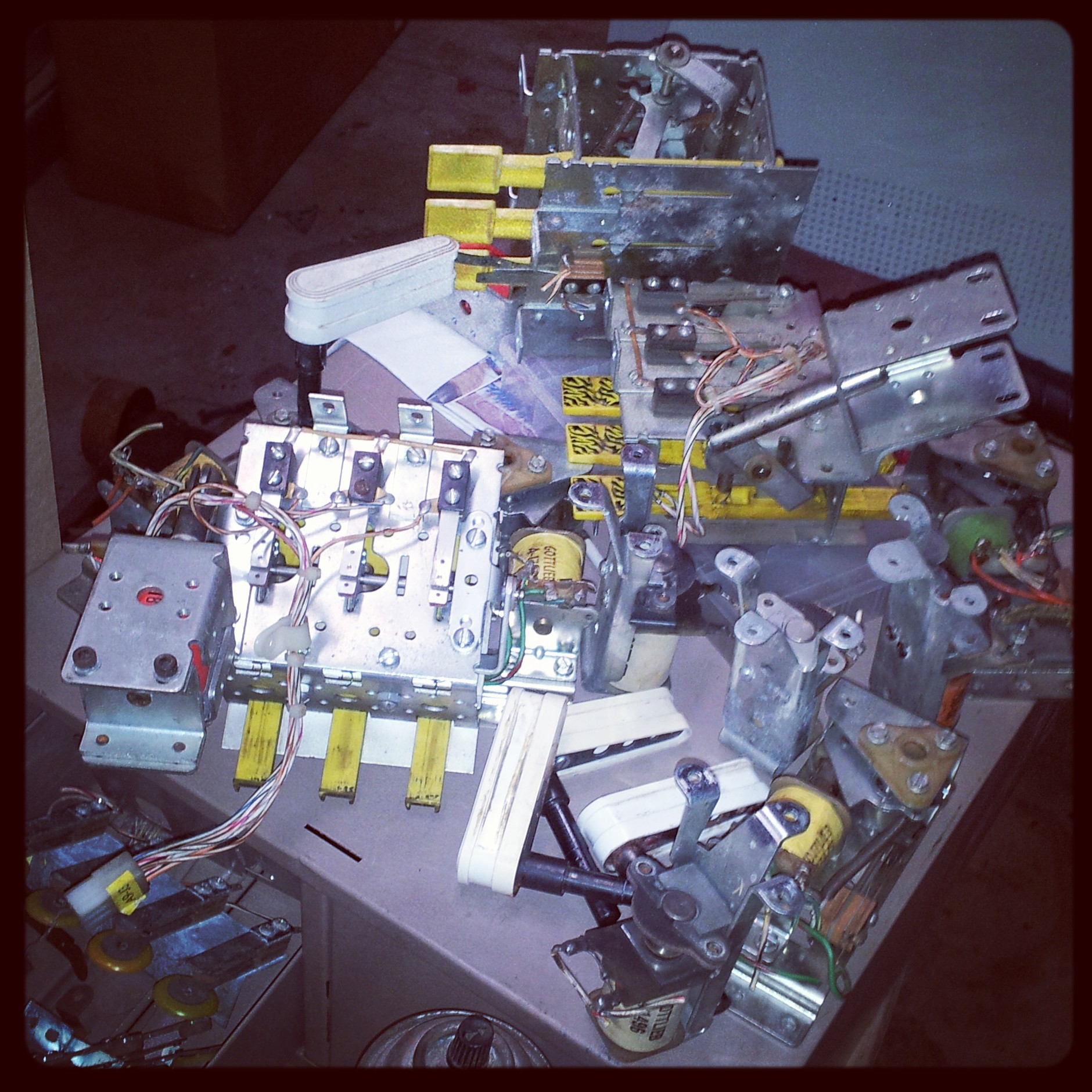
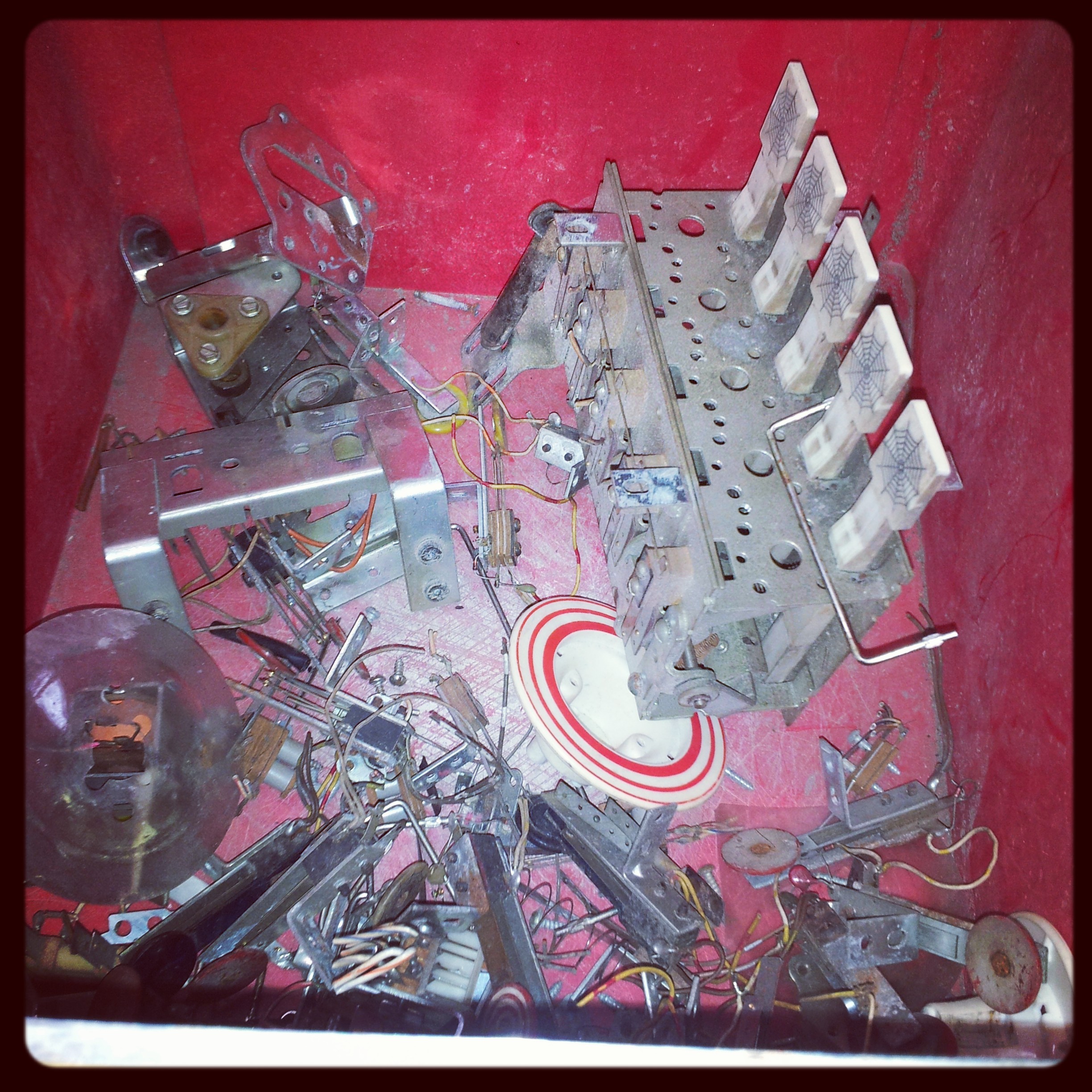
I also bought a head from a mysterious 4 player EM for $20:
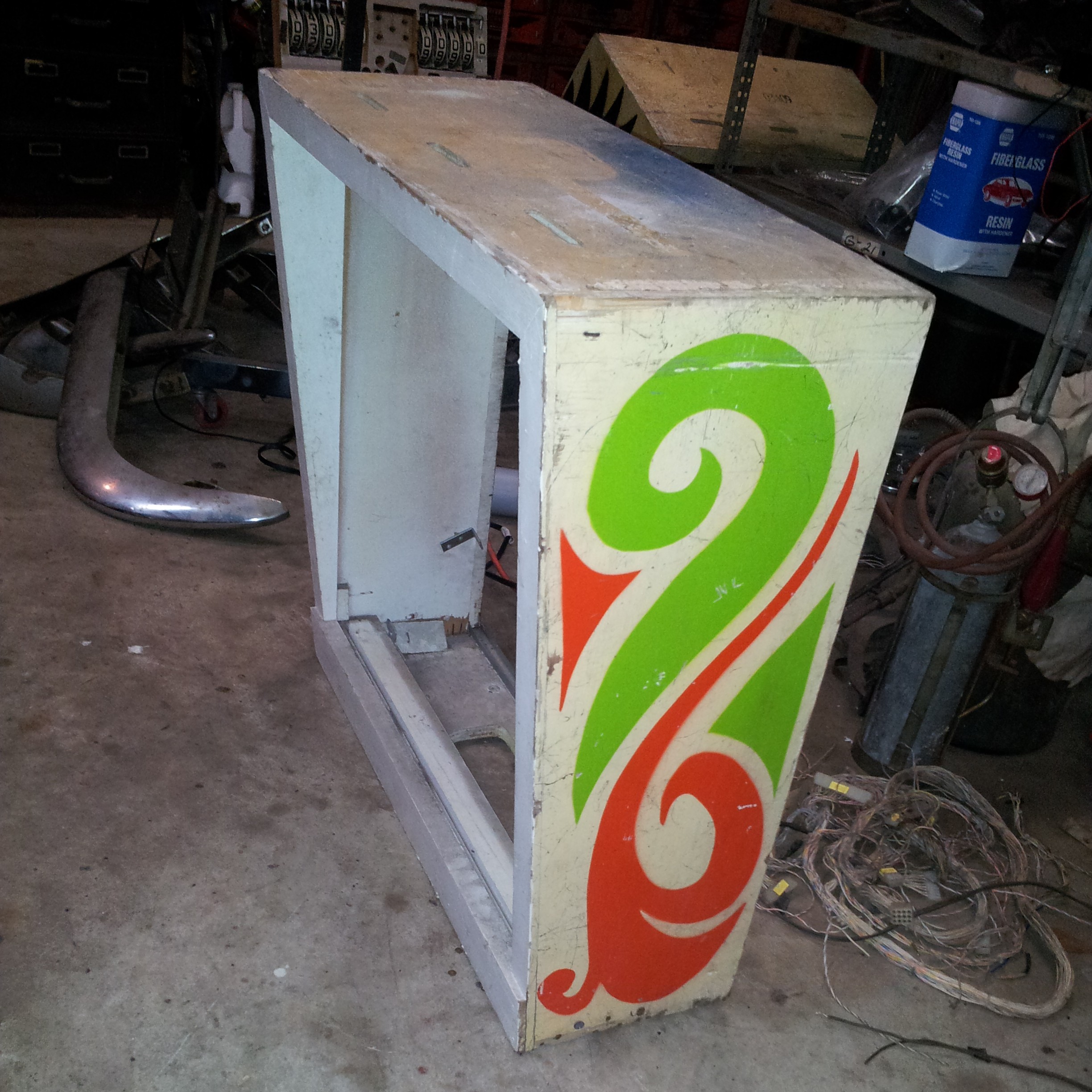
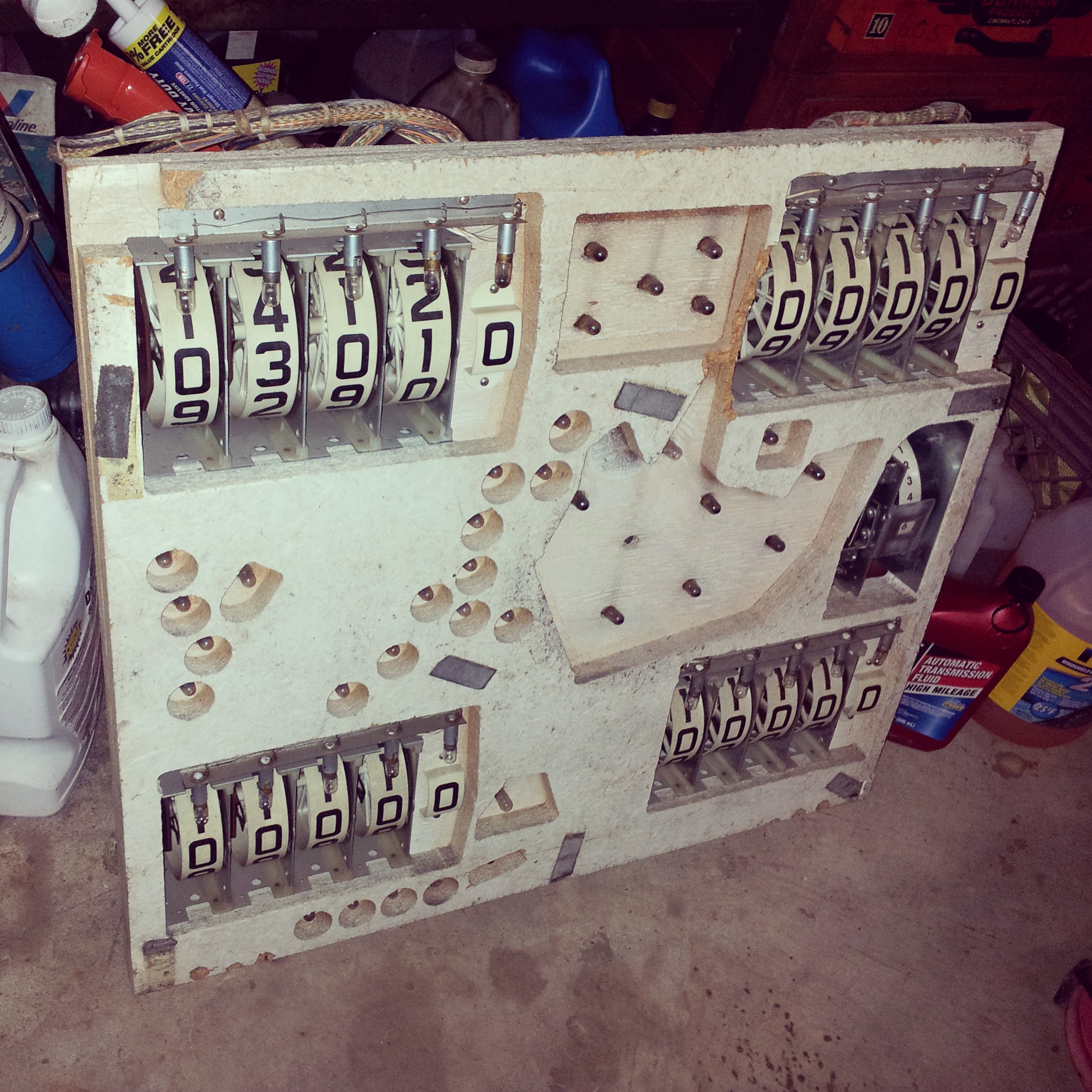
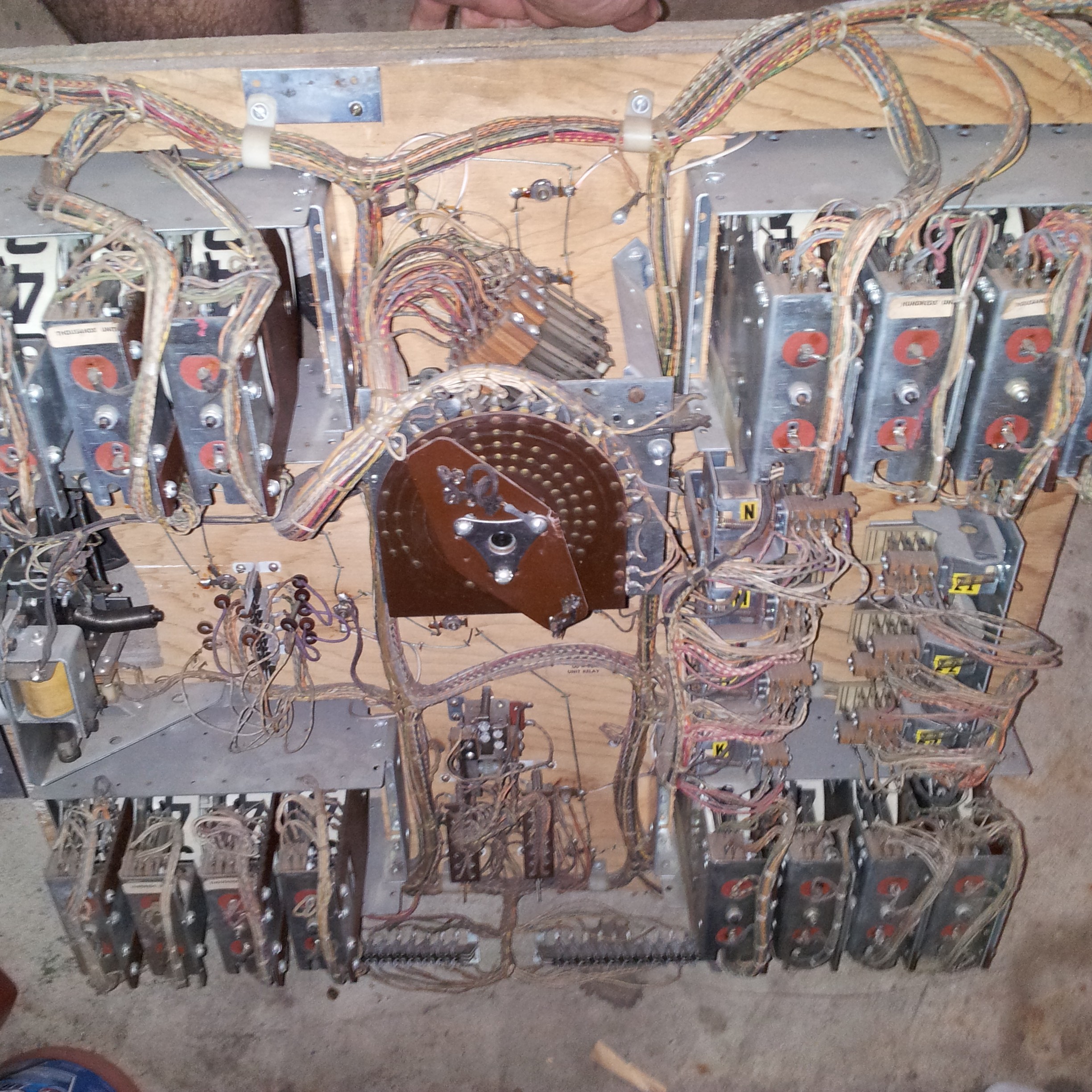
I really wasn't looking forward to the thought of trying to assemble a cabinet from scratch that would work with regular parts, but luckily I found this slightly beaten Spring Break cabinet for $15
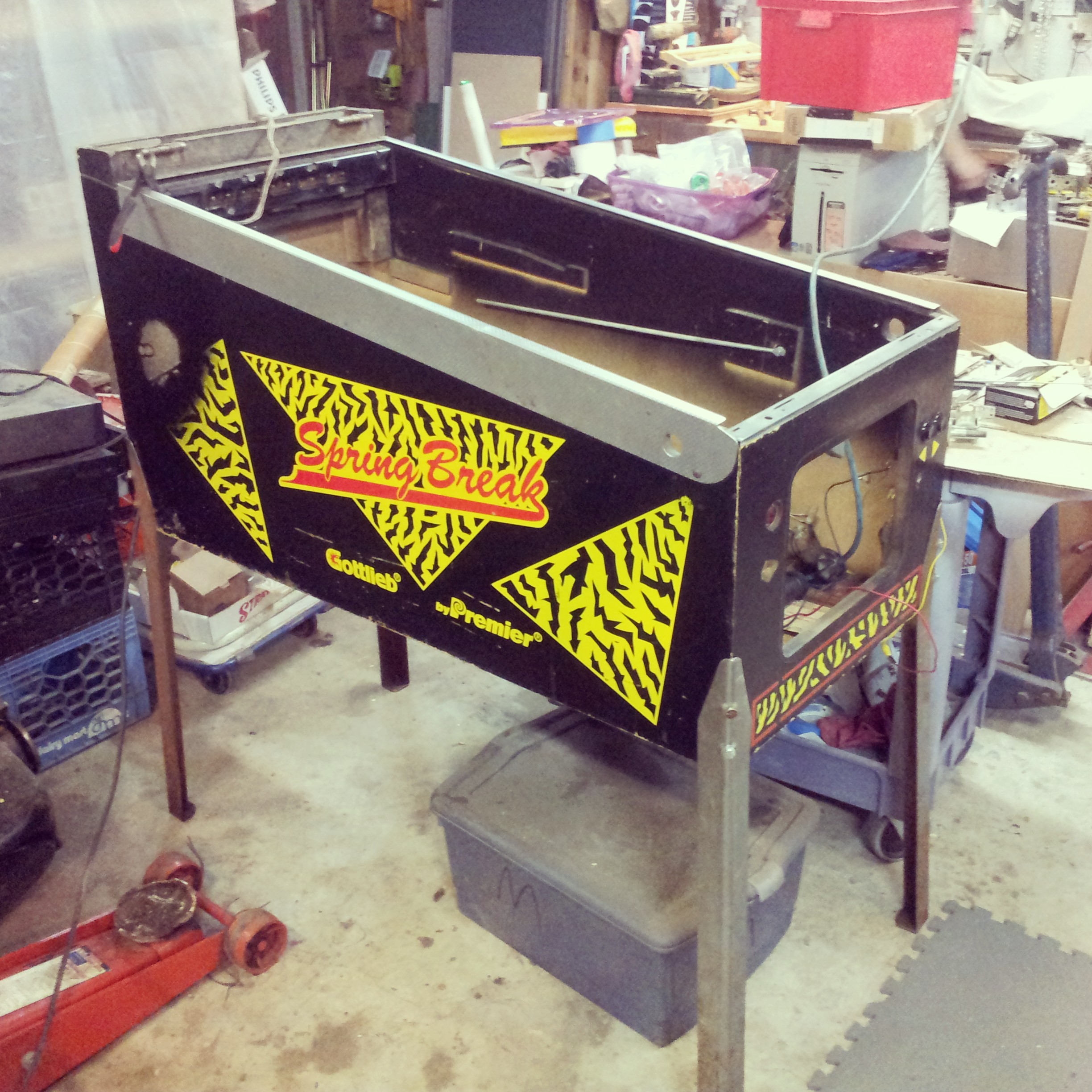
(the legs were separate, another $20)
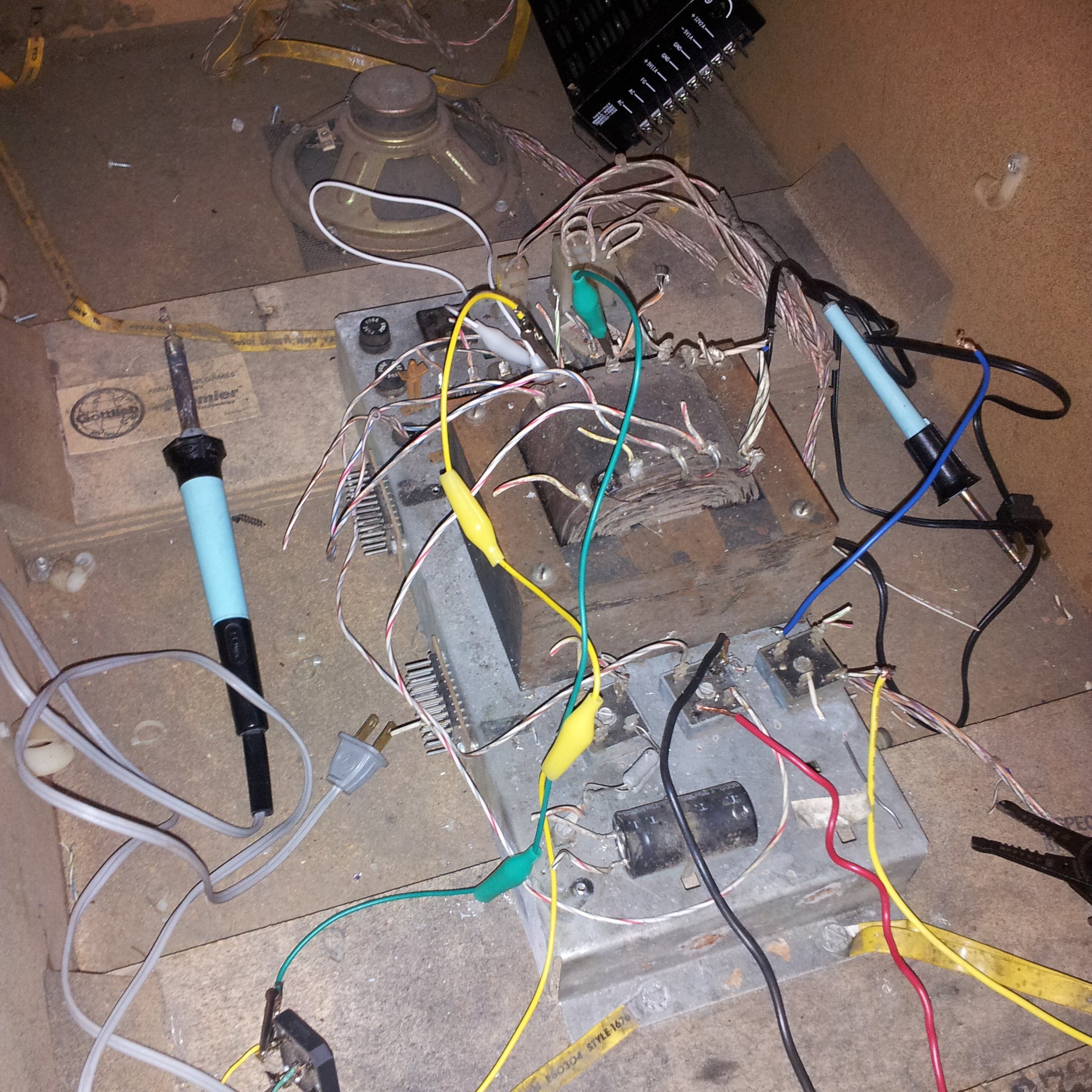
It even came with a working power supply, so I didn't need to worry about finding a 25-50V power supply. I was able to find a combination of taps that put out 28VDC after recification. Most non-EM pinball aficionados seem to think that 50V+ is the way to go, but honestly the flippers seem just as strong on my 25V games as my 50V.
Pinball, pt 3: Electronics
I put in an order to Digikey for $70 (!) of electronics, including some high power MOSFETs for the solenoid drivers:
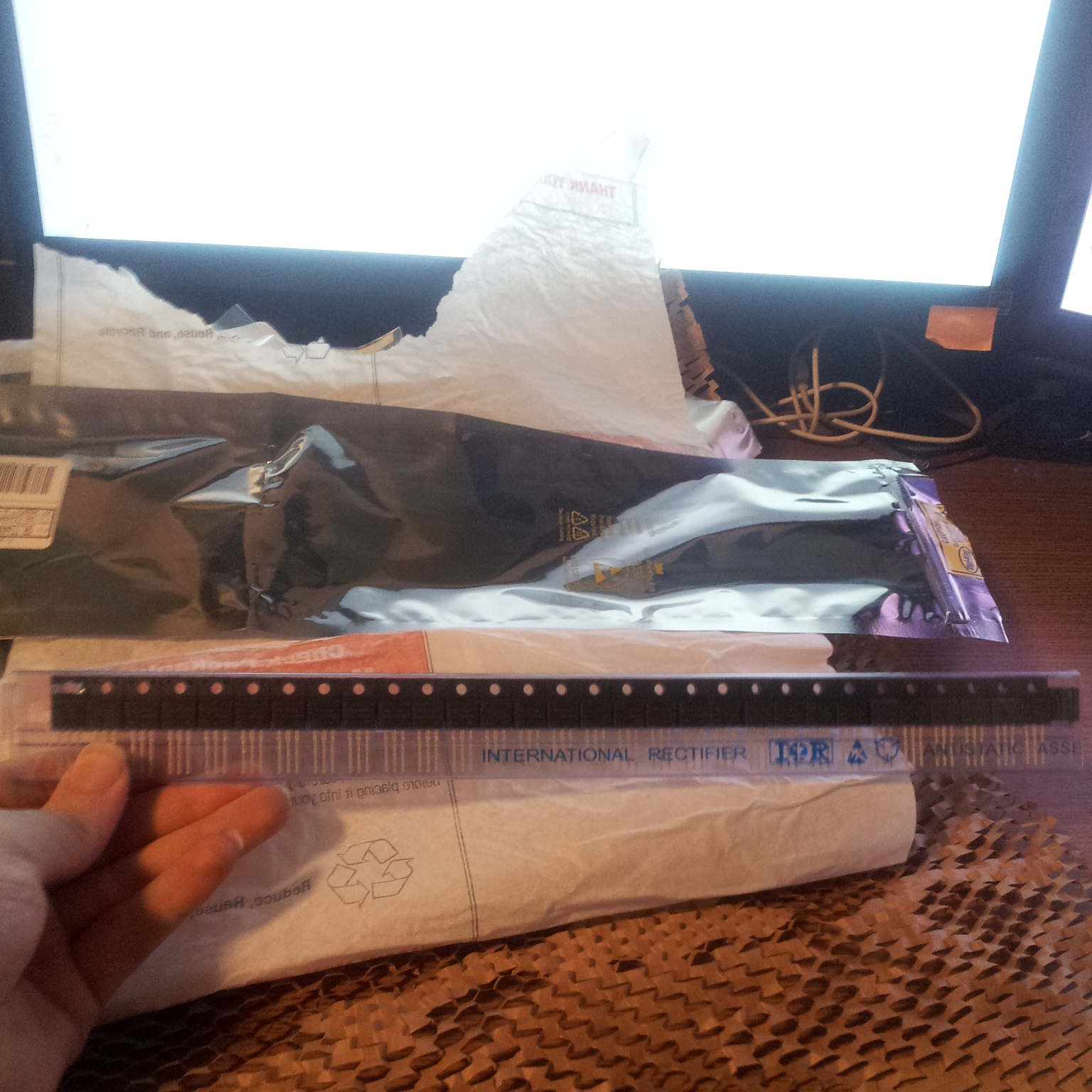
, some serial LED drivers, some serial input multiplexers,
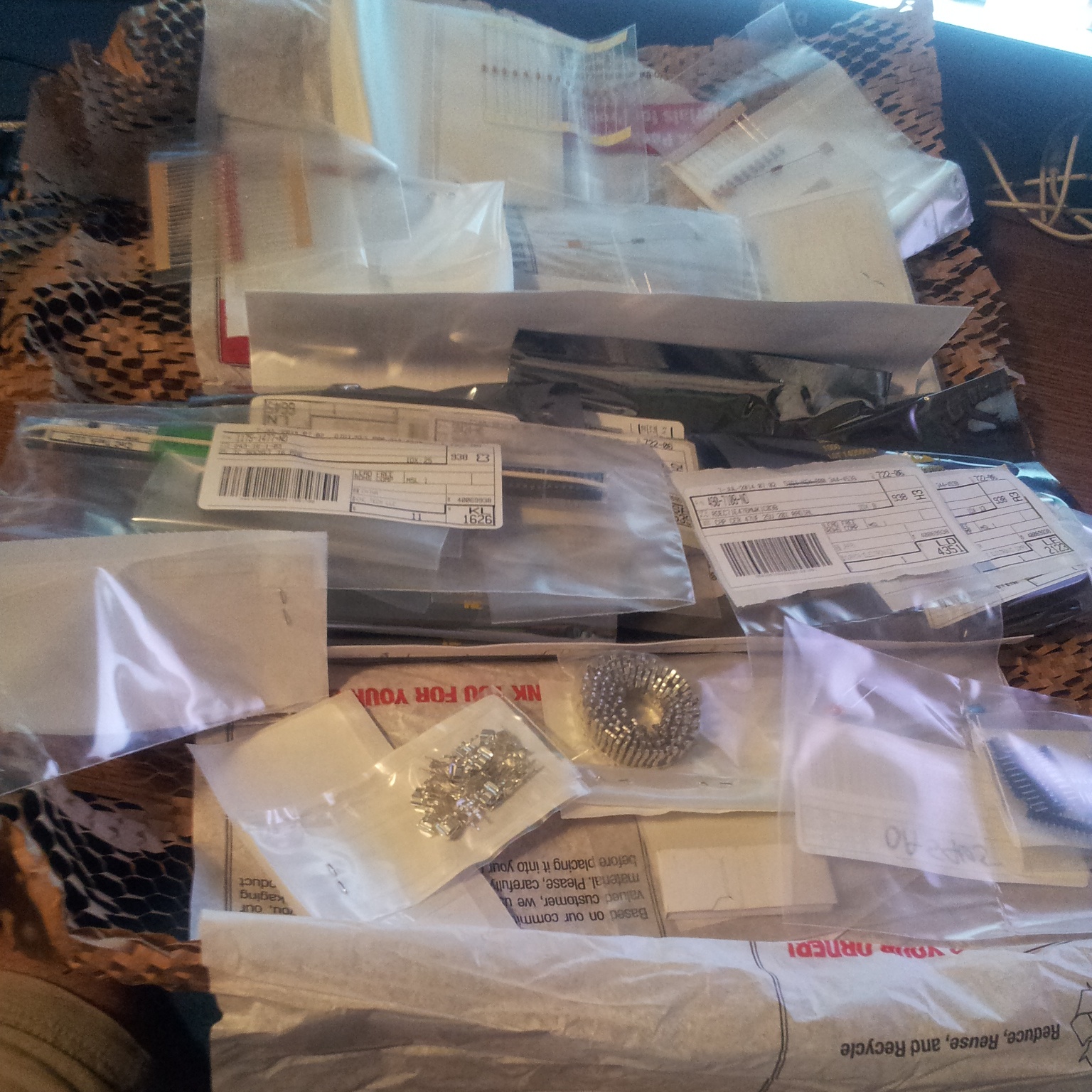
, some parts for making molex connectors,
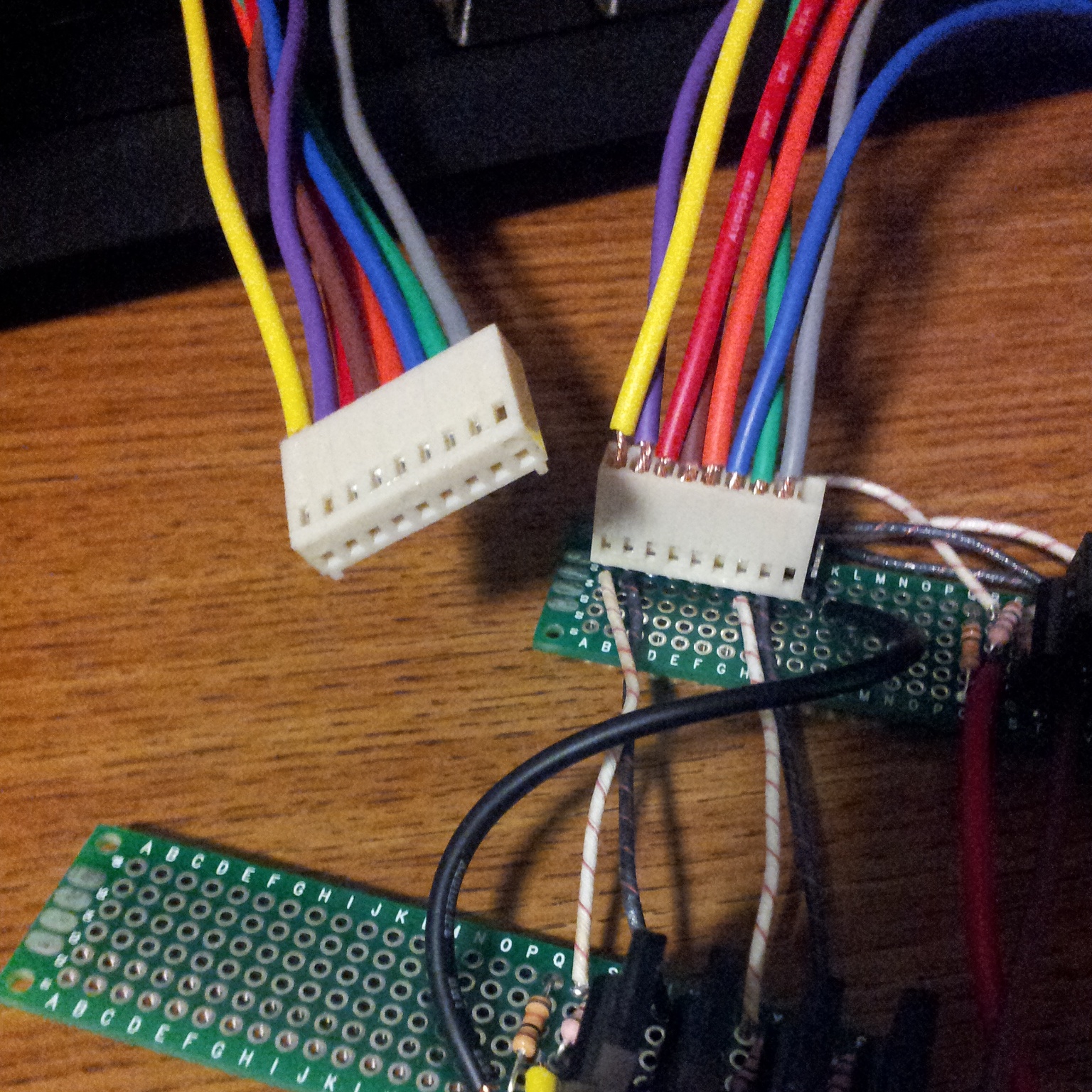
, three CPU boards (basically cheaper, more powerful, lower level Arduinos),
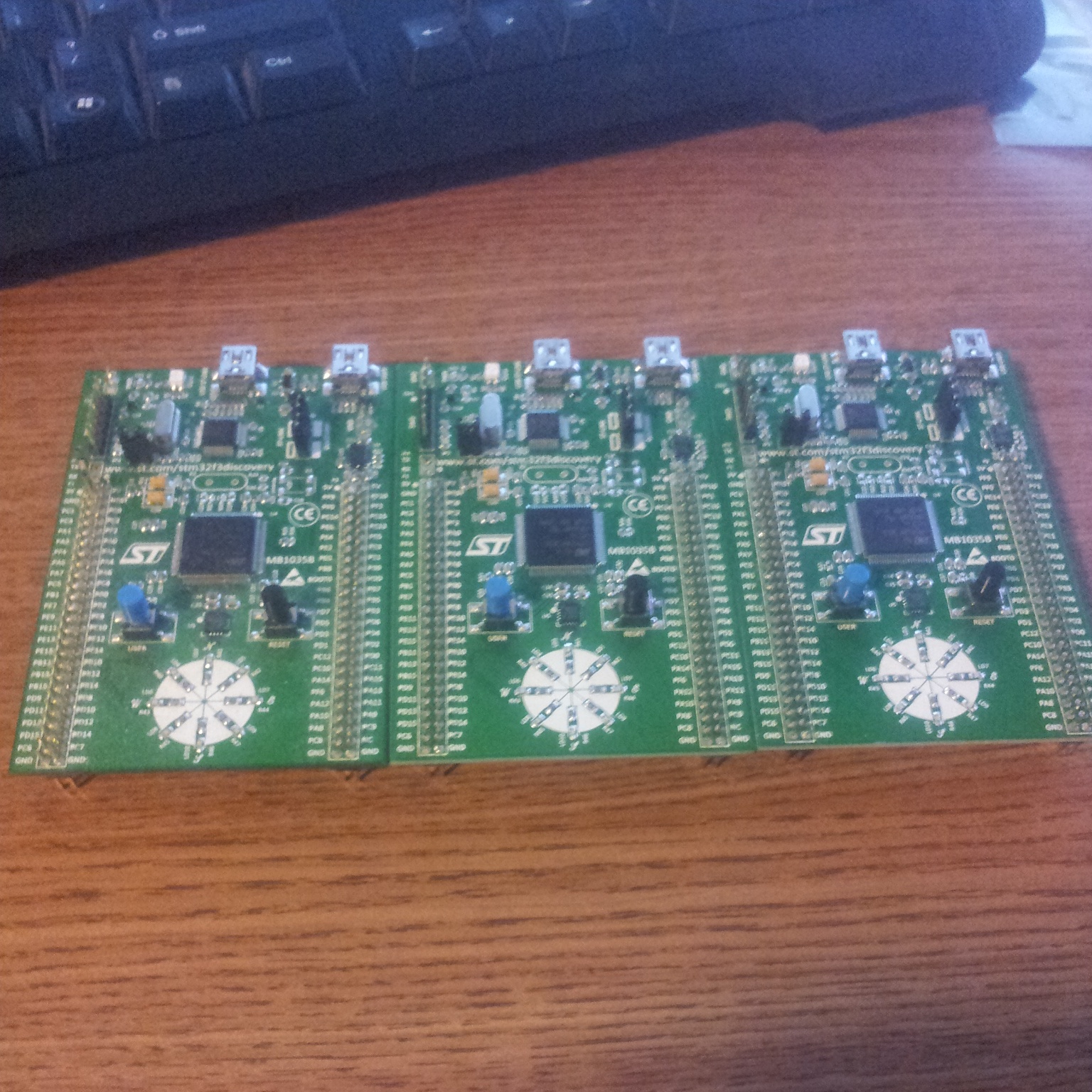
...and a ton of stuff for audio output, including this surface mount op-amp, which turned out to be *really tiny*
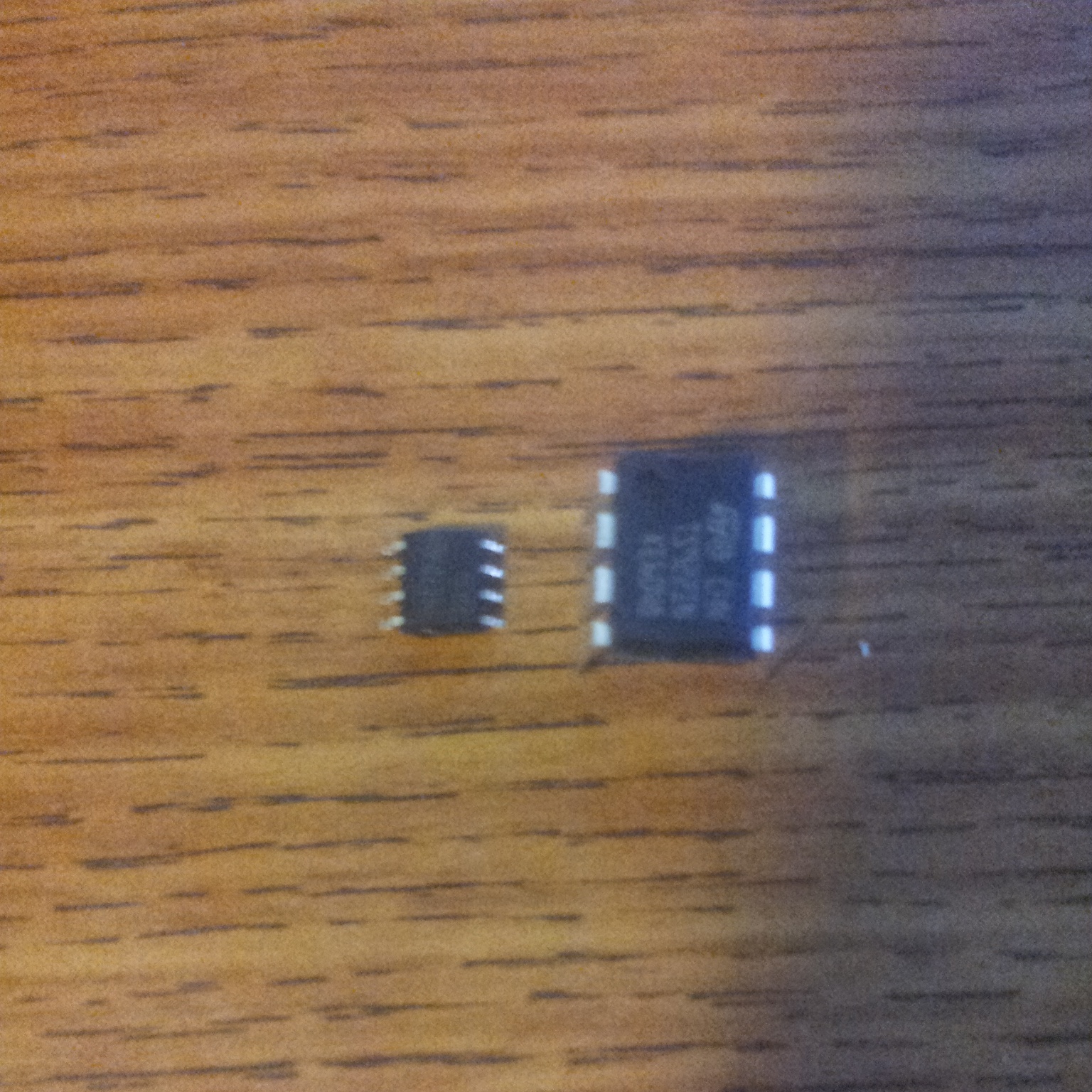
I made some nice compact solenoid driver boards
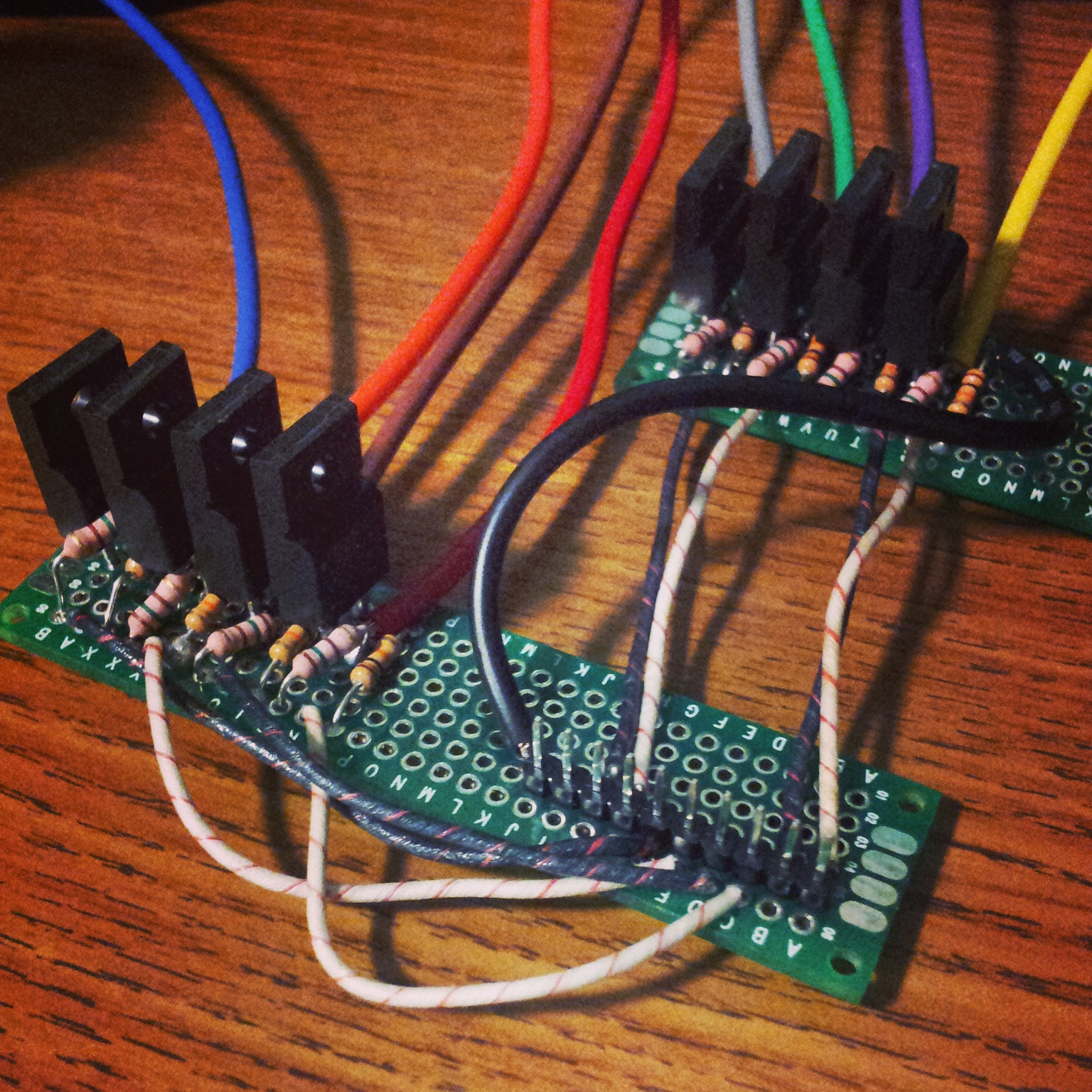
Looking at schematics for actual machines they've got all kinds of weird stuff, however just a MOSFET, two resistors, and a line to the CPU were enough to fire the solenoids just fine. I wish I had some way to turn them off in case the CPU locks up while one is turned on, but I don't know what that would be, and as far as I can tell 'professional' machines don't do it either.
